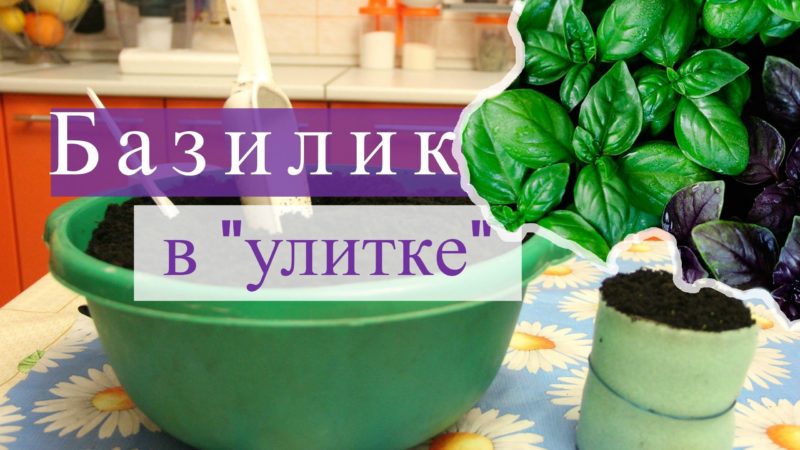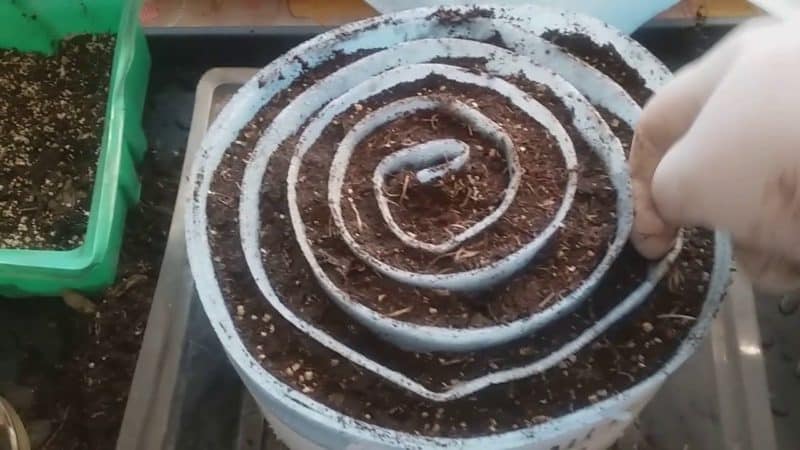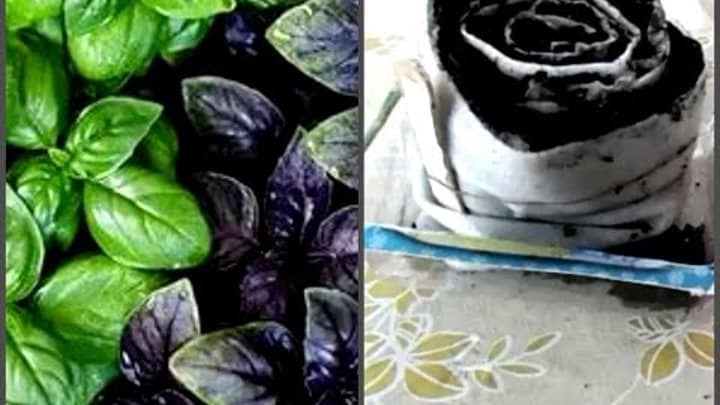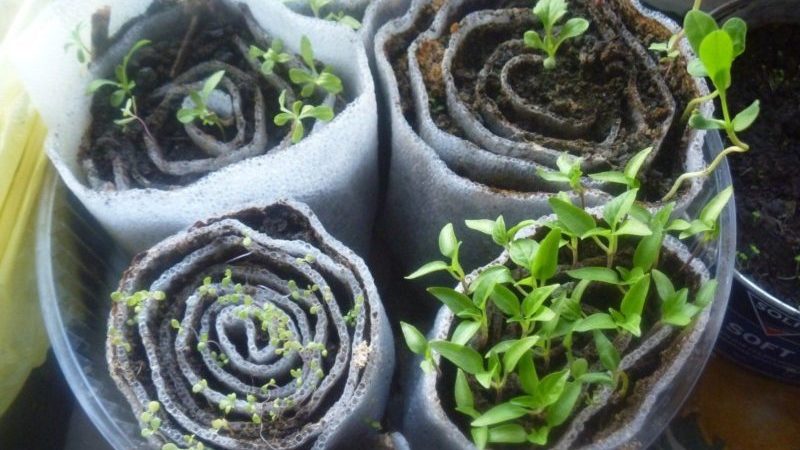How to properly germinate basil seedlings in a snail
Basil is a famous spice with a unique aroma and taste. Some national cuisines cannot do without a green or purple leaf or sprig of basil. They grow it in the garden and on the windowsill in winter. Growing basil seedlings from seeds in snails is gaining popularity.
Growing seedlings in a snail
The snail itself is made from a laminate backing. The method is very relevant for growing seedlings in city apartments, where there is not much space.

Advantages and disadvantages
Characteristic advantages include:
- rational use of space - the snail does not take up much space and can accommodate up to 15 plants;
- ease of manufacture and cost-effectiveness - the cost of materials is often lower than the purchase of peat pots and containers for seedlings;
- saving soil;
- access to light for all plants;
- ease of picking;
- ease of care;
- quick harvest;
- reducing the risk of seed death from frost in contrast to the direct method.
Agronomists and botanists often highlight the disadvantages, arguing against this method with the following facts:
- for growing seedlings there are certain recommended distances, and if they are observed, the snail increases in size;
- watering leads to subsidence of the soil and a decrease in the distance between plants;
- Growing basil for seedlings in a snail is possible only before picking;
- mature plants intertwine with each other, shade and compete for light;
- the root system of seedlings older than three weeks begins to intertwine, winning back food;
- The conditionally closed root system in snails does not allow seedlings to be transplanted using the transshipment method without damaging the roots.
Agronomists consider growing in snails an intermediate stage from sowing to picking or transplanting into open ground.
Sowing dates

Basil is sown in snails 5-6 weeks before the intended transplant into the ground. Typically this period occurs at the end of March - beginning of April.
Agronomists recommend replanting seedlings no older than 4 weeks from emergence:
- in the middle zone and Volga region the optimal period is early April;
- in the southern regions - early March with planting at a permanent place in early May;
- for Siberia and the Urals, the optimal time is the third ten days of April with transplantation into the ground at the end of May or beginning of June.
Methods
There are several ways to grow seedlings in snails, some of them do not even use soil as a substrate.
The methods differ according to the materials used:
- Made from plastic film and unscented toilet paper or regular paper napkins. Place napkins or paper moistened with water on plastic wrap, then lay out the seeds and roll them up.
- From a laminate base with a thin layer of primer - the classic method.
- With gauze or bandage as a substrate. Gauze is folded in several layers onto a substrate in the form of a laminate or polyethylene bedding. Place the seeds at a distance of 2-3 cm from each other and roll the entire roll into a snail.
- Made from polyethylene and newspaper. Instead of a backing for the laminate, use ordinary newspapers folded in 2-3 layers.

How to properly sow seeds into a snail
Let's look at the classic method of making a snail - from a laminate substrate and soil.
Required materials and tools:
- backing for laminate with a thickness of no more than 2 mm;
- substrate for sowing garden crops;
- prepared basil seeds;
- dry saucer;
- tweezers or toothpick;
- tape or rubber bands to secure the snail;
- snail container;
- film or cellophane to create a greenhouse;
- spray;
- teapot with spout;
- potassium permanganate;
- hot water.
Step-by-step instructions for planting seeds:
- A strip 10 cm wide and long, depending on the number of seeds, is cut from the substrate. The optimal distance between seeds is 2-4 cm.
- Lay out the oilcloth on the work surface (table, floor) and spread the tape along its entire length.
- The soil is evenly distributed over the tape in small sections with a height of 1.5-2 cm.
- Boiling water is poured into a kettle with a spout and a few crystals of potassium permanganate are added to obtain a slightly pink solution.
- They pour hot water over the soil and let it soak, lightly compacting it.
- The seeds are placed on the ground with tweezers or a toothpick at a distance of 3-4 cm from the edge of the tape, slightly recessing them into the substrate so that they do not fall out when the structure is rolled up.
- From one of the edges the tape is tightly rolled into a roll.
- The roll is rewound with tape or rubber bands.
- The finished structure is placed in a prepared container with a diameter 1-2 cm larger than the snail. The main thing is not to mix up the sides of the roll. The edge closest to which the seeds were placed is placed up.
- Water is poured into the bottom of the container to nourish the soil.
- The remaining potassium permanganate solution is poured into a spray bottle and sprayed on the soil.
- A plastic film or bag is pulled over the snail and the container, creating a greenhouse effect.

Further care
Before the first shoots appear, the greenhouse is opened once a day for 30 minutes for ventilation and watering. After the first leaves appear, the greenhouse is removed. To ensure light conditions and warmth, it is placed on the southern windowsill. The duration of daylight for seedlings is 12-14 hours; phytolamps can be used to extend them.
Warm, settled water at a temperature of +30…+35°C is used to spray the soil as it dries. Bottom watering is carried out once a week, draining off the residue after half an hour.
Planting of seedlings is carried out after the appearance of the first two true leaves.
This is interesting:
How to properly prepare basil for the winter at home in different ways.
How to properly freeze basil for the winter: a selection of the best methods.
Conclusion
Planting snail seedlings is easy - the roll is simply unrolled as you move in the garden bed. Making snails itself does not take much time and space. As an intermediate step in growing basil, this method is very convenient. However, agronomists do not recommend snails for cultivating basil on a windowsill. Classic containers for seedlings are more suitable for this.